What does a pear diamond look like?
The pear-shaped diamond cut, also known as the teardrop shape, combines the elegance of a round brilliant cut with the unique look of a marquise cut. It has a rounded end and a pointed end, resembling a teardrop or a pear. The diamond is faceted to maximize brilliance and fire, with a larger, rounded section at the top and a narrower, pointed section at the bottom. The pear shape offers a graceful and elongated look, making it a popular choice for both engagement rings and pendant necklaces.
Pear cuts can be absolutely stunning if chosen wisely. For this reason, I want to take this opportunity to point out a few pitfalls you might encounter when buying a pear cut diamond. - Dr. Rian Mulcahy
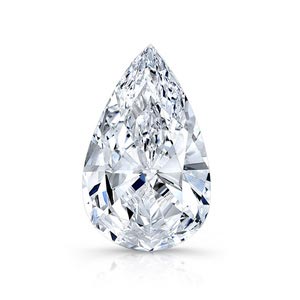
Pear is Another Diamond Love Child
Just like our radiant cut diamond was the lovechild of the princess and emerald cuts, the pear cut is the result of a steamy love affair between a round brilliant and a marquise cut (they met at a bar and they’re still together).
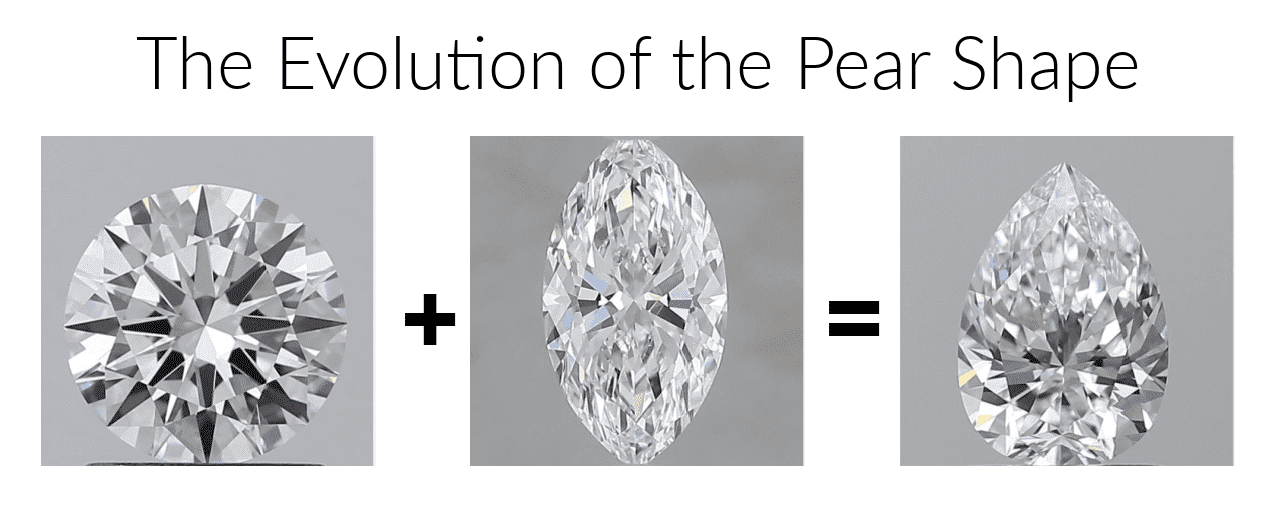
Additionally, just like the radiant, the pear inherits many of the best traits of its heritage. For example, its elongated shape means it will make your finger look positivity elegant. On a more interesting note though, the pear shape is actually a very versatile stone because you can wear it two ways – with the ‘point’ facing in or out, depending on your mood and style.
Furthermore, pear cuts tend to be in less demand than some other more popular cuts (like cushion or oval), and because of that, you will find the price-per-cart is significantly lower than those ‘popular’ kids.
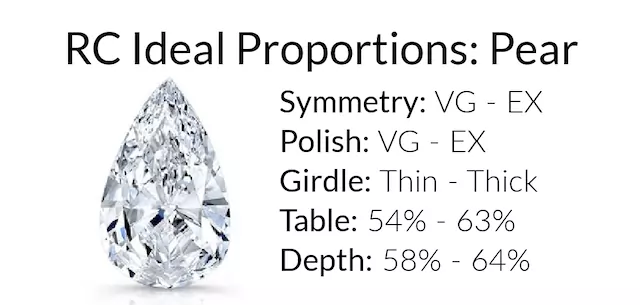
Pear Cut Length to Width Ratio
All of that being said, however, we still need to point out some of the danger zones when it comes to pears, many of which are similar to those discussed in our post about marquise cuts.
First, we have length-to-width ratio. Again, just like our marquise cut stones (and remember, pears are half marquises) you need to have just the right ratio in order to avoid your stone looking malnourished or overfed. I would recommend a ratio of between 1.45:1 and 1.55:1.
Venturing under 1.45 and you are entering the thicker zone, which will counteract all that lovely slimming effect that is such a positive aspect of the pear shape in the first place. Heading over 1.60 means that the stone is going to look too skinny and long. This said of course, if you like that longer look (or indeed that shorter rounder look) on a pear, it’s your diamond and you can do whatever the heck you like.
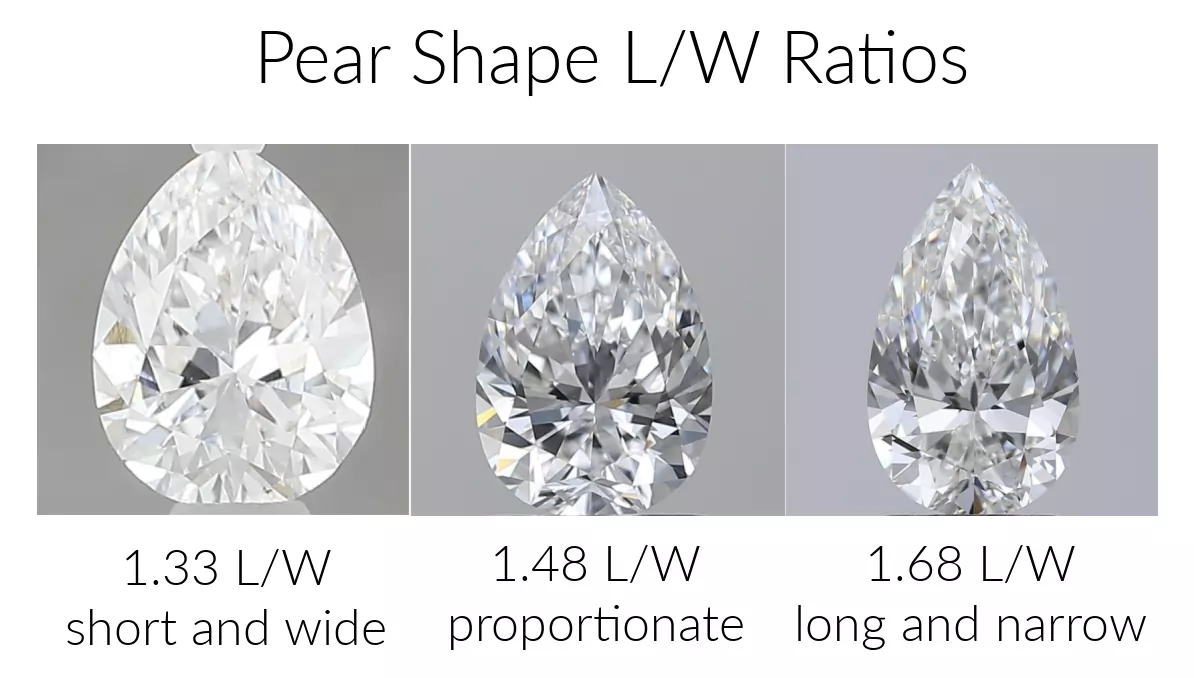
Pear Shape Diamond Bow Tie Effect
Remember those bow ties we discussed with so many of the other fancy shapes? Yup, they’re back! The depth percentage range wherein you might be able to avoid a very pronounced bow tie is approximately 58%-64%, although there will always be a subtle bow tie shadow with these types of cuts. It really is about avoiding the more pronounced ones rather than eliminating them altogether. Learn to love the bow tie, people.
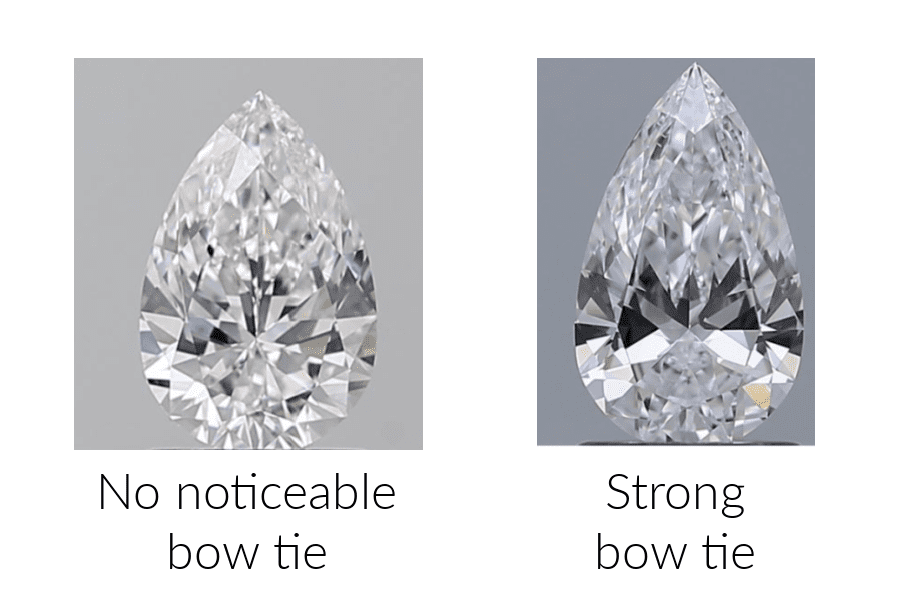
Pear Cut Color and Clarity
As we have learned, these modified brilliants (fancy cuts) tend to hold on to their color more than their round counterparts (especially in that little teardrop tip). For that reason, when it comes to color I will give you the same advice as I gave you when discussing marquise; go for ‘G’ or above for a stone of about 1 carat, and even higher (‘D-F’) if going for a stone over 1.5 carats. That said, if you plan on setting your pear cut in a gold/rose gold band, you can afford to go a little warmer on the color as the gold band will make the stone look whiter!
With clarity, just like with the marquise, feel free to pop down to the ‘VS2-SI1’ range, as the pears are rather efficient when it comes to hiding small imperfections. As usual though, you need to be careful about the positioning of these inclusions. For that reason, I will again repeat myself like a broken record; always, always, always try get a look at the actual diamond on offer. You want a high-definition 360º video and the opinion of one of our graduate gemologists before you commit (click the bubble on the right for a GG). I also suggest only buying a pear that is GIA certified.
Not Sure the Pear Shape is Right for You? Read more about them below:
- Pear Shape Diamond Buying Guide
- Why Pear Shaped Diamonds are Really Special
- Pear MM to Carat Guide
- Whats the best cut grade for this shape? Read more here!
Read these articles for other Shapes and Cuts;
- Marquise diamond cut buying guide
- Heart diamond cut buying guide
- Cushion diamond cut buying guide
- Oval diamond cut buying guide
- Round diamond cut buying guide
- Radiant diamond cut buying guide
- Pear diamond cut buying guide
- Asscher diamond cut buying guide
- Princess diamond cut buying guide
Follow us on Social: Facebook * Instagram * Pinterest * Twitter

